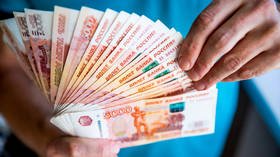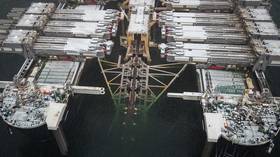Russian ruble is one of the most attractive emerging market currencies in post-pandemic world – Goldman Sachs

Goldman Sachs analysts have named the Russian ruble as one of their three top picks for emerging market currencies to back once the panic over the coronavirus pandemic eases.
In a note released earlier this week and cited by CNBC, a team of Goldman strategists said that Russia’s national currency closely follows the South African rand and the Mexican peso in the list of most attractive among “high cyclical beta, high carry longs.”
The former reflects a currency's sensitivity to the broader economic cycle and market returns. A currency carry trade is a strategy under which a high-yielding currency funds the trade with a low-yielding currency to allow traders to capture the difference between the rates.
Also on rt.com Economy now more important than military expenses, Russia's budget plans showWhile the peso is the bank’s “top choice,” given its combination of currency-supportive macro fundamentals, the report noted that two other high-yielders have more room to run compared to it. However, the bank noted that investment into those emerging market leaders should come after the coronavirus crisis eases, as the bets are currently too risky.
“Given significant domestic risks, however, including South Africa’s October mid-term budget announcement for the rand, and a combination of still-volatile political headwinds and slowly fading macroeconomic tailwinds for the ruble, the key question for each currency is whether high global betas can (eventually) trump domestic headwinds,” Goldman analysts said, adding they are optimistic about their prospects.
Also on rt.com Russia continues stockpiling gold, raising forex reserves to near all-time highThe economic fallout of the pandemic, combined with geopolitical risks and tumbling oil prices, has had a negative impact on the ruble this year. As of Friday, the Russian currency dropped to its lowest point against the US dollar since March, trading at 78.21 per dollar.
During the previous drop in the ruble rate, Goldman Sachs said it expected the currency to retrace some of losses, predicting it to return to 61 rubles per dollar within two years. The outlook was based on the expected gradual rise in oil prices, which may to rise to $60 per barrel over the same period, according to the bank.
For more stories on economy & finance visit RT's business section














